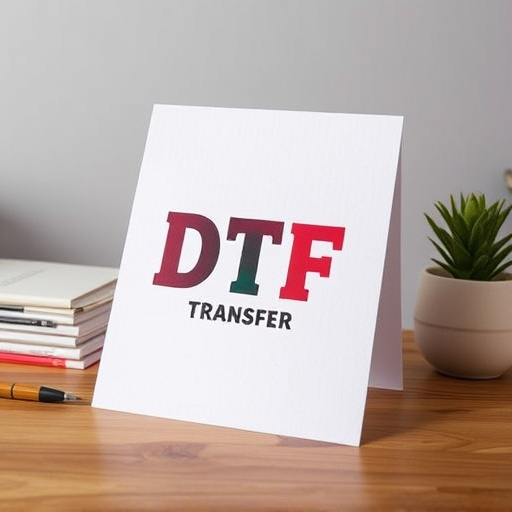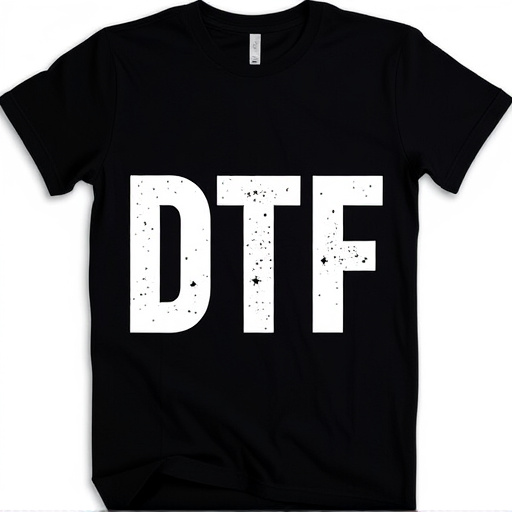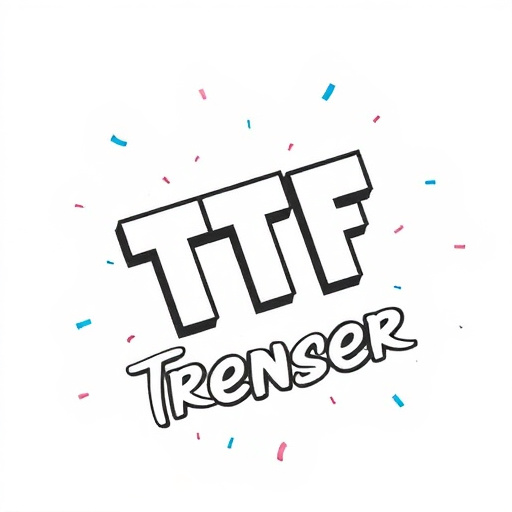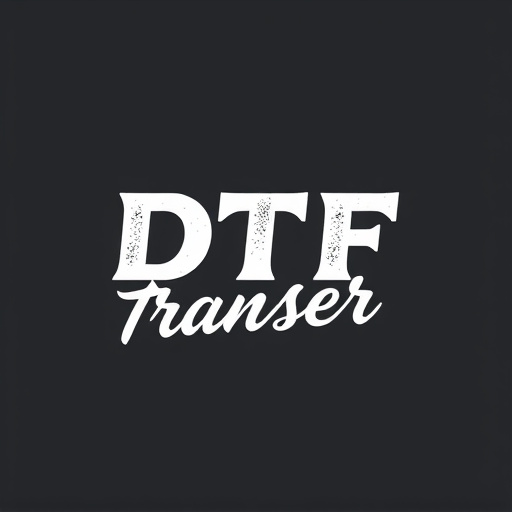Direct-to-film (DTF) transfers offer a creative and accessible way for hobbyists to bring designs to life. Using specialized ink and UV light, intricate patterns are applied to materials like textiles, wood, or metal through a film mask. Beginners should focus on creating or sourcing digital designs, then transfer them to a film. Under UV light, the film blocks areas, enabling precise ink printing for detailed DTF prints. This method empowers creators with scalability, versatility, and artistic expression across various media. Choosing between high-resolution transfers or specialized printing papers depends on project needs. Following five simple steps, hobbyists can easily create high-quality DTF prints. DTF technology opens doors to custom apparel, crafts, event decor, and more. Investing in quality materials, consistent preparation, and regular maintenance enhances DTF printing skills.
Direct-to-film (DTF) transfers offer a captivating avenue for hobbyists and artisans to bring their creative visions to life. This article serves as your comprehensive guide to exploring the world of DTF printing, from mastering the basics of DTF transfers to unlocking its endless artistic possibilities. We’ll delve into choosing the right materials, the step-by-step process, diverse applications, and expert tips to elevate your DTF skills.
- Understanding Direct-to-Film (DTF) Transfers: A Beginner's Guide
- Benefits of DTF for Hobbyists and Artisans
- Choosing the Right Materials for Your DTF Project
- Step-by-Step Process of Creating DTF Prints
- Applications and Ideas for Your DTF Creations
- Tips and Tricks to Enhance Your DTF Printing Skills
Understanding Direct-to-Film (DTF) Transfers: A Beginner's Guide
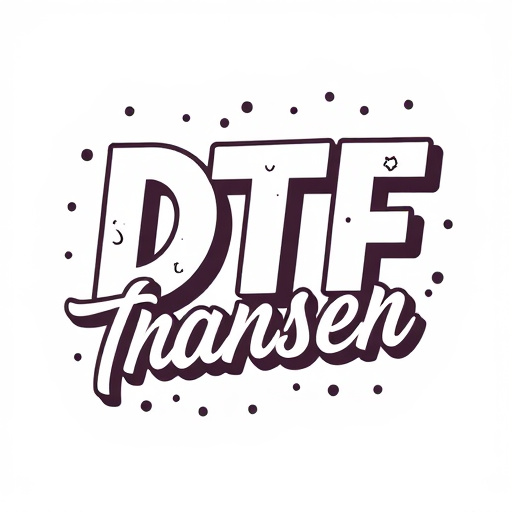
Direct-to-film (DTF) transfers offer a unique and accessible way for hobbyists and artisans to bring their creative visions to life. This printing method allows you to apply intricate designs directly onto various materials, from textiles to wood and metal, without the need for complex equipment or expertise. DTF involves using specialized ink and a UV light source to cure the design onto the chosen substrate.
As a beginner, understanding the basics of DTF transfers is essential. The process starts with creating or obtaining a digital design suitable for printing. This design is then transferred onto a film, which acts as a mask. When placed over your substrate and exposed to UV light, the film blocks areas of the design, allowing only specific parts to be printed with ink. This precise control enables you to achieve detailed and precise DTF prints, perfect for customizing projects and adding unique artistic touches.
Benefits of DTF for Hobbyists and Artisans

Direct-to-film (DTF) printing offers a plethora of advantages for hobbyists and artisans seeking to bring their creative visions to life. One of its key strengths lies in its accessibility; DTF Transfer technology allows individuals to create high-quality, intricate designs on various materials with ease. This method eliminates the need for complex setup and equipment, making it an attractive option for those new to printing or with limited resources.
For hobbyists and artisans, DTF Printing provides a cost-effective way to produce personalized items at scale. Whether it’s custom jewelry, unique home decor, or intricate fabric designs, DTF Prints offer exceptional detail and precision. This technology enables creators to experiment with different media, from textiles to wood, metal, and plastics, opening up a world of possibilities for artistic expression and product development.
Choosing the Right Materials for Your DTF Project

When embarking on a direct-to-film (DTF) project, selecting the perfect materials is half the battle won. The key to achieving high-quality DTF prints and transfers lies in understanding your project’s requirements. For hobbyists and artisans, choosing the right media depends on the desired outcome and surface application. High-resolution, inkjet-printed DTF transfers offer a versatile option for various surfaces like fabric, wood, or paper. These transfers provide fine detail reproduction and can be easily applied with heat press machines.
For more durable and long-lasting results, consider using specialized DTF printing papers designed for direct application on different materials. These papers ensure optimal color accuracy and adhesion when used with compatible inks. Whether creating intricate designs for clothing, crafting personalized gifts, or decorating home decor items, the right material choice will bring your artistic vision to life.
Step-by-Step Process of Creating DTF Prints

Creating Direct-to-Film (DTF) prints is an accessible and exciting process for hobbyists and artisans looking to bring their designs to life. Here’s a straightforward, step-by-step guide to get you started with DTF transfers:
1. Design Preparation: Start by creating or acquiring a digital design that you want to print. This can be done using graphic design software like Adobe Illustrator or Photoshop. Ensure your design is high-resolution and has good contrast for optimal printing quality.
2. Film Selection: Choose a suitable DTF film based on your project’s requirements. These films vary in terms of durability, glossiness, and adhesive strength. Consider factors like the surface you’ll be applying the print to and whether you need it to be permanent or temporary.
3. Printing the Design: Use a high-quality printer compatible with DTF printing to print your design onto the selected film. Ensure accurate color reproduction by calibrating your printer settings and using suitable inks designed for DTF applications.
4. Applying the Transfer: Once printed, carefully peel off the backing of the DTF film. Place the design face down on the desired surface, then apply heat and pressure using a heat press or iron to transfer the image. Ensure even pressure is applied across the entire print area for a crisp result.
5. Curing and Finishing: After cooling, inspect your DTF print for any imperfections. For permanent applications, cure the print by exposing it to UV light or following the manufacturer’s guidelines for optimal adhesion. For temporary uses, allow the adhesive to set before handling to avoid smudging.
Applications and Ideas for Your DTF Creations

Direct-to-film (DTF) technology offers a world of possibilities for hobbyists and artisans looking to bring their creative visions to life. With DTF Transfer and Printing, you can transform your designs into tangible art pieces with ease. One of the key applications is custom apparel; create unique T-shirts, hoodies, or accessories with intricate DTF prints that stand out from the masses. Imagine adding personalized touches to your crafts, such as wooden signs, ceramics, or even home decor items, making them one-of-a-kind and appealing to a wide range of customers.
Beyond clothing and crafts, DTF is versatile enough for various other projects. You can design and print on fabric for stage costumes, backdrops, or special event decor, offering a cost-effective solution for theater groups and event organizers. Furthermore, consider the potential for creating custom stickers, labels, or even small sculptures with intricate details. The possibilities are endless when you harness the power of DTF Printing, allowing you to turn your artistic ideas into physical products with precision and efficiency.
Tips and Tricks to Enhance Your DTF Printing Skills

To elevate your Direct-to-Film (DTF) printing skills, start by investing in high-quality materials and consistent preparation. Using top-notch DTF transfers ensures better adhesion and more vibrant prints. Always clean and inspect your film and print surface thoroughly before each session to prevent any contaminants that could disrupt the transfer process. Precisely aligning the DTF transfer with your design is crucial for crisp, detailed prints. Consider using alignment tools or marking guides to achieve this accurately.
Experimentation is key in mastering DTF printing. Try different types of inks, coatings, and film types to find what works best for various projects. Don’t be afraid to adjust settings on your printer—temperature, pressure, and application time can all impact the final print quality. Regularly cleaning and maintaining your DTF setup will ensure consistent results. Keep a log of successful prints and their corresponding settings for future reference, enabling you to refine and perfect your DTF Printing skills over time.










